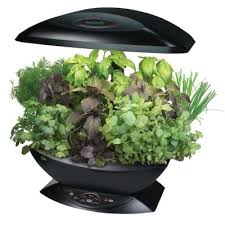 1. To encourage parsley to sprout more rapidly, soften the seeds by soaking them overnight in warm water.
1. To encourage parsley to sprout more rapidly, soften the seeds by soaking them overnight in warm water.2. Thyme plants should be started from seed every two to three years. Older plants are poor in quality for cooking or other uses.
3. Harvest mint often to encourage vigorous growth - but grow it in a container or it will take over your garden.
4. The best time to harvest herbs is early in the morning on a sunny day.
5. Make successive plantings of chervil if you want to harvest it all summer.
6. Rubbing lavender leaves with your hands can remove strong odors, like garlic or onion.
7. Many herbs like dill and sage self sow if the flowers are not removed.
8. Add comfrey to the compost pile. Its leaves are rich in nitrogen and help break down organic materials.
9. Mints need more water than most herbs. They want fairly moist but not soggy soils.
10. Mulching around herbs will discourage weeds and maintain the moisture level of the soil.
11. In many cases, adding garden compost to the upper surface of the soil in the spring is all the fertilization herbs will need for the year.
12. If you're interested in companion planting, try basil next to tomatoes. It really helps to slow down the bugs.
13. In general, collect herbs for cooking right before they flower. This is when they have the most flavor.
14. Seeds often take longer to dry than the leaves, up to 2 weeks for larger seeds. Place seed heads on dry paper cloth. When they really start to dry out, rub the seeds gently between your palms removing dirt and hulls. Then spread the clean seeds in thin layers on cloth or paper until completely dry.
15. Another way you can dry herb seeds is by hanging the plant upside down inside a paper bag (make sure its paper! Plastic will hinder drying). The bag will catch the seeds as they dry and fall from the pod.
16. When storing herbs don't use a paper or cardboard container. This material, over time, will absorb all of the aromatic flavor.
17. If you don't trust your seed starting skills, one of the best places to get organically started herbs and other transplants is your local farmers market. Quite often the person selling them is the person who grew them in the first place.
18. Anise and basil are just some of the herbs known to attract beneficial insects to your garden.
19. Herbs are a great candidate for your first foray into formal gardening. Try an English knot garden with your favorites.
20. Do not use garden soil as a potting mix in containers. It may drain poorly and is likely to contain insects, diseases, and weed seeds.




0 comments on "Herb Gardening Tips"
Post a Comment